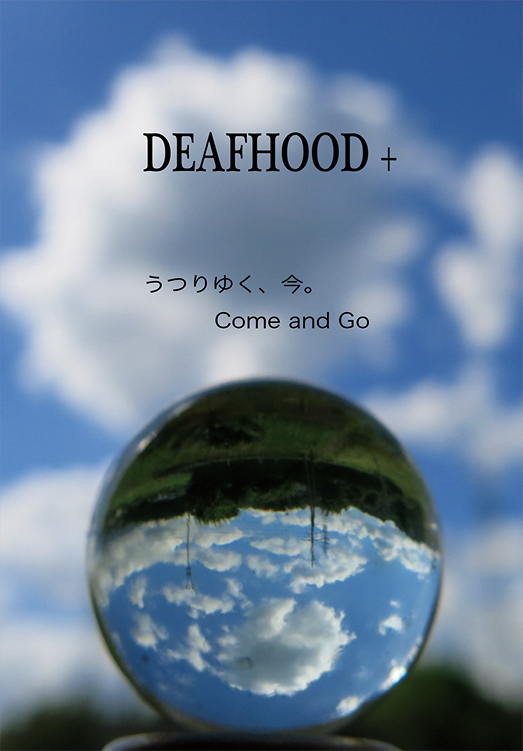Curator FEmma Ota
ProducerFKentaro Chiba
16th September- 26th September
11:00-19:00
¦This show is the second in three serial exhibitions
venue: Art Lab Akiba
Even if it has no concrete shape the past and future exist in the present. If we take on everything, connect one to another, enwrap what is before us, then we can come and go as we please between one culture and the next. Last year Haruna Morohoshi reflected upon her condition of being deaf from birth, and here she continues in the reconstruction of her identity and self-image through the term “Deafhood”. Here she opens a space for realization and the expression of her creative thoughts.
Inverted Crossings
The crystal ball is a space in which the past and future emerge in the present, now has become, now will become. The gaze of what was or what will be has a certain distance or perspective which makes it easy on the eye but to confront the now in its present continuous form is another matter.
Haruna Morohoshi continues in her series examining the Past, Present and Future of Deafhood, this time taking on the most challenging tense of the Current. Last year in her examination of the past Morohoshi led us through the museum which Paddy Ladd describes in his seminal book gDeafhoodh, which describes a (recent) past of colonialism of the hearing world over the culture of Deafhood. In her first solo exhibition she presented hearing aids and devices for orating previously used in deaf schools in the late 20th century, laid out themselves like museum pieces, alongside the provocative presence of a hammer. On this occasion she turns her eye to the present, and the parallel of two different worlds which crisscross between each other.
As we enter the space of the gallery, we enter a double world of inner perception and asked to question our way of gseeing thingsh. We may inhabit the environment around us through a certain set of sensory markers which we take for granted, but when these become flipped we may understand things differently through a new realization. The present which Morohoshi offers us is one of choice. Just as Paddy Ladd describes his choice to enter the hidden room of the Museum, a room containing the cultural richness of Deafhood, just as Ladd decided to reverse the paintings which had placed with their images to the wall in this space, all who enter this gallery may undertake a selection, and with the tools they have to hand discover another world which they may frequent as they please.
The present is multiple, not singular, the present is progressive, not fixed, and as we reach for a vocabulary to describe this multiflorous ebb and flow we also come to uncover the manifold gvoicesh which attempt to express this experience in numerous languages.
The challenge before us is to realize this choice and confront the agent of action.
Emma Ota : Curator

